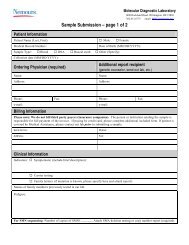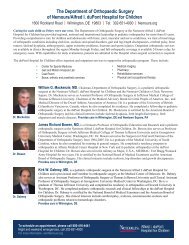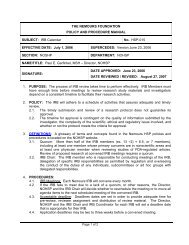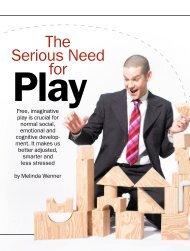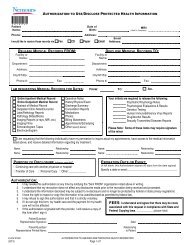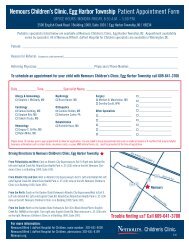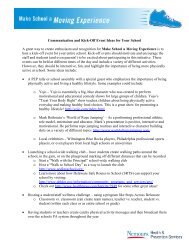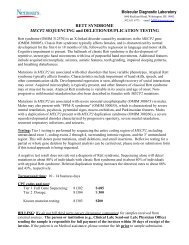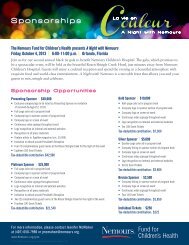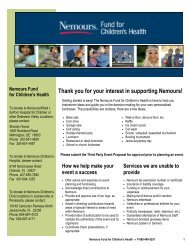Best Practices for Healthy Eating Guide - Nemours
Best Practices for Healthy Eating Guide - Nemours
Best Practices for Healthy Eating Guide - Nemours
You also want an ePaper? Increase the reach of your titles
YUMPU automatically turns print PDFs into web optimized ePapers that Google loves.
Tip Sheet: <strong>Healthy</strong> <strong>Eating</strong> <strong>for</strong> Infants Ages 4 through 7 Months<br />
Signs of Hunger<br />
Babies should be fed whenever they show you they are<br />
hungry. Look <strong>for</strong> these signs:<br />
n Rooting: a reflex in newborns that makes them turn<br />
their head toward a breast or bottle to feed<br />
n Sucking on fingers or a fist<br />
n Moving, licking or smacking of lips<br />
n Fussing or crying<br />
n Excited arm and leg movements<br />
Signs of Fullness<br />
It’s not necessary <strong>for</strong> your baby to finish a bottle or<br />
container of food. If she shows signs that she is full and<br />
there is food left, allow her to stop eating. When making<br />
a meal, offer the correct amount of food <strong>for</strong> her age<br />
and offer more only if she is still hungry and engaged in<br />
eating. Look <strong>for</strong> these signs of fullness:<br />
n Sealing lips together, decreasing sucking, spitting out<br />
or refusing the nipple, or pushing or turning away<br />
from the breast or bottle<br />
n Milk begins to run out of the baby’s mouth<br />
Safety and Storage of Formula<br />
• Always follow label directions carefully.<br />
• If your baby doesn’t finish the bottle of <strong>for</strong>mula within<br />
1 hour, throw out the remainder. Bacteria from saliva<br />
can contaminate the <strong>for</strong>mula and make your infant<br />
sick if she drinks it later.<br />
• To prevent waste and save time, mix a large batch<br />
of <strong>for</strong>mula and divide it into bottles that you can<br />
refrigerate and use throughout the day.<br />
Formula Storage <strong>Guide</strong>lines<br />
Location of Storage Maximum Recommended Storage Time<br />
Room Temperature 2 hours<br />
Room Temperature 1 hour if warmed<br />
Refrigerator<br />
24 hours<br />
Safety and Storage of Breast Milk<br />
n It is best to defrost breast milk either in the<br />
refrigerator overnight, by running under warm water,<br />
or by setting in a container of warm water. Thawed<br />
breast milk should be used within 24 hours. Do not<br />
refreeze unused milk.<br />
n If your baby doesn’t finish the bottle of breast milk<br />
within one hour, throw out the rest. Bacteria from<br />
saliva can contaminate the milk and make your infant<br />
sick if he drinks it later.<br />
Breast Milk Storage <strong>Guide</strong>lines<br />
Location of Storage Maximum Recommended Storage Time<br />
Room Temperature 3-4 hours<br />
Refrigerator<br />
48-72 hours<br />
Freezer<br />
6 months<br />
<strong>Best</strong> <strong>Practices</strong> <strong>for</strong> <strong>Healthy</strong> <strong>Eating</strong> 53



